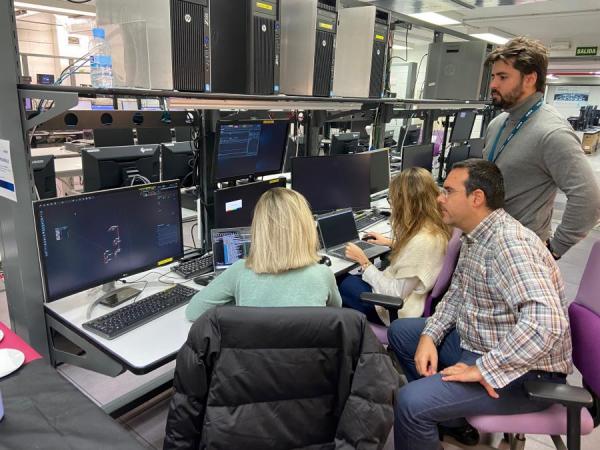On 15 and 16 November, partners in the SESAR U-space AURA project completed a series of tests on two solutions aimed at enabling interactions between systems managing drone and conventional air traffic (ATM).
Coordinated by Indra, the AURA (PJ.34) project aims to integrate the management of the very low-level airspace (VLL) or U-space as it is also known, with traditional air traffic management systems. The goal is to enable seamless operations between U-space and ATM.
Two validations took place in Madrid at Indra’s premises.
The first exercise assessed different interactions between U-space and ATM systems in a mid to long-term scenario, where there is a high volume of U-space operations. Under these new air traffic conditions, several ATM-U-space interface functionalities and services have to be developed further. For this reason, one of Indra's exercises focused on validating the expected interactions between U-space services and ATM to enable dynamic drone flight plan modifications in case of non-nominal conditions, such as unmanned aerial systems (UAS) flying within a no-fly area after having applied a dynamic airspace reconfiguration. thea drone was performing a runway inspection when a manned aircraft requested clearance for an emergency landing. The air traffic controller performed a Dynamic Airspace Reconfiguration, forbidding UAS operations in the requested runway while enabling a U-space corridor allowing the drone to safely exit the conflicting area and ending its mission. Once the runway was cleared, air traffic controller gave clearance for a safe manned emergency landing. Everything went as expected!
What about the other exercise? A certain portion of airspace was delegated to UAS operations so that several commercial missions could be performed. These included a police drone mission, which was delegated to a particular area in which no other drones could operate. These operations were taking place in very low level (VLL) far from controlled airspace. Thanks to the "smart filtering" functionality, only UAS traffic information was shared with the ATM system, particularly to alert of a helicopter flying near the police drone mission or when a non-cooperative drone was entering into the police U-space area of operation.
In both exercises several innovative services and functionalities of the ATM-U-space interface were successfully tested, such as: dynamic airspace reconfiguration, “smart filtering” or dynamic flight plan modification. These were in addition to standard U-space functionalities like flight plan authorisation, geofencing or non-conformance monitoring were tested during this validation.

This project has received funding from the SESAR Joint Undertaking under the European Union's Horizon 2020 research and innovation programme under grant agreement No 101017521
